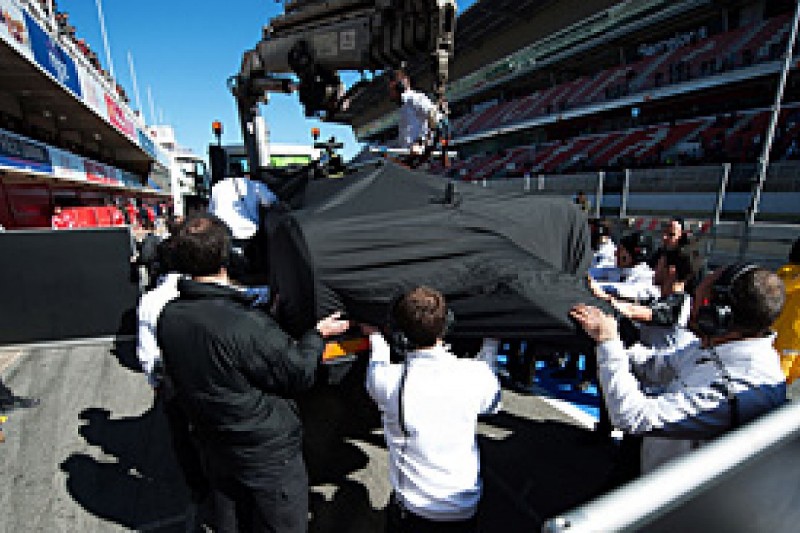Fernando Alonso recovers in hospital but in doubt for final F1 test
McLaren will decide later this week if Fernando Alonso will drive in the final Formula 1 pre-season test, while the Spaniard continues to recover in hospital following his Barcelona crash

The Spaniard was airlifted to hospital on Sunday for observation after he crashed his McLaren in to the wall at Turn 3 shortly before the lunchtime break on the final day of testing.
Barcelona hospital officials elected to keep Alonso in hospital for further observation on Monday.
Alonso's manager Luis Garcia Abad showed that there was no major cause for concern about Alonso's condition though when he tweeted a picture of the double world champion giving the thumbs up from his hospital bed.

McLaren issued a statement on Monday confirming that all test results had been positive and that the Spaniard's recovery was going well.
"In hospital a thorough and complete analysis of his condition was performed, involving CT scans and MRI scans, all of which were completely normal," said the statement.
"In order to provide the privacy and tranquillity required to facilitate a peaceful recuperation, he is being kept in hospital for further observation, and to recover from the effects of the medication that successfully managed his routine sedation yesterday."
McLaren added that a decision on whether or not Alonso would test for the team again at Barcelona this week would be made later.
MECHANICAL FAILURE RULED OUT
The lack of video of Alonso's crash, and the fact he had to be taken to hospital after a fairly innocuous impact, prompted wild conspiracy theories.
But McLaren says that its initial investigation suggests the wind was to blame, and it ruled out talk of Alonso being overcome by battery fumes or even being electrocuted.
"His car ran wide at the entry to Turn 3 - which is a fast uphill right-hander - allowing it to run onto the Astroturf that lines the outside of the track," said McLaren.
"A consequent loss of traction caused a degree of instability, spitting it back towards the inside of the circuit, where it regained traction and struck the wall side-on.
"Our findings indicate that the accident was caused by the unpredictably gusty winds at that part of the circuit at that time, and which had affected other drivers similarly (eg, Carlos Sainz Jr).
"We can categorically state that there is no evidence that indicates that Fernando's car suffered mechanical failure of any kind.
"We can also confirm that absolutely no loss of aerodynamic pressure was recorded, which fact indicates that the car did not suffer any aerodynamic loss, despite the fact that it was subjected to a significant level of g-force."
ALONSO CONSCIOUS BEFORE IMPACT
McLaren added that the possibility of Alonso being overcome before he hit the wall could be ruled out by the fact he was applying full brake pressure and changing down gears in his attempt to slow the car.

"We can also disclose that no electrical discharge or irregularity of any kind occurred in the car's ERS system, either before, during or after the incident," it added.
"That last point refutes the erroneous rumours that have spread recently to the effect that Fernando was rendered unconscious by an electrical fault. That is simply not true.
"Our data clearly shows that he was downshifting while applying full brake pressure right up to the moment of the first impact - something that clearly would not have been possible had he been unconscious at the time.
"Our data also confirms that Fernando's car struck the inside concrete wall, first with its front-right wheel and then with its rear-right. It was a significant lateral impact, resulting in damage to the front upright and axle.
"After the initial impact, the car slid down the wall for about 15 seconds before coming to a halt. All four wheels remained attached to the car, but no damage was sustained by the bodywork or crash structure between the front and rear wheels."
Be part of the Autosport community
Join the conversationShare Or Save This Story
Subscribe and access Autosport.com with your ad-blocker.
From Formula 1 to MotoGP we report straight from the paddock because we love our sport, just like you. In order to keep delivering our expert journalism, our website uses advertising. Still, we want to give you the opportunity to enjoy an ad-free and tracker-free website and to continue using your adblocker.



















Top Comments